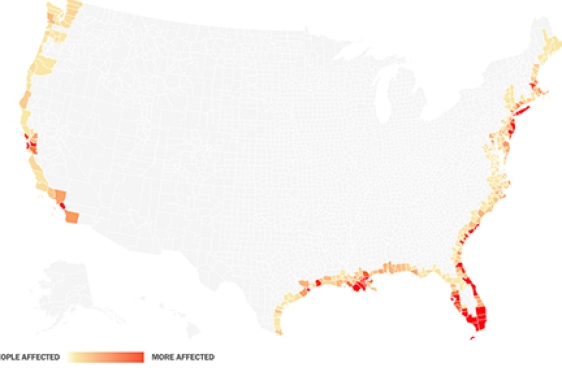Tags: bipedal
Millions of years ago, before humans became fully bipedal, ancestral hominins used stones to break bones and nuts, probably while standing upright. A new study from the Primate Cognition and Behavior Lab in the department of psychology published today by the Royal Society journal Proceedings B documents how contemporary bearded capuchin monkeys likewise use stones to break nuts:
[B]ecause the fossil record is…
A major new publication sheds light on one of the implications of sea level rise - where will displaced people from inundated coastal areas go?
In a paper published today in Nature Climate Change, researchers estimate that approximately 13.1 million people could be displaced by rising ocean waters, with Atlanta, Houston and Phoenix as top destinations for those forced to relocate.
The study is the first attempt to model the destination of…
Assessing the risk from rising seas using year 2100 population forecasts for all 319 coastal counties in the continental U.S., a new UGA study predicts that more than 13 million American homes will be threatened by rising sea levels by the end of the century:
The study is based on analyses by Mathew Hauer for his doctoral work with the UGA Franklin College of Arts and Sciences; Deepak Mishra of the UGA department of geography; and Jason…



